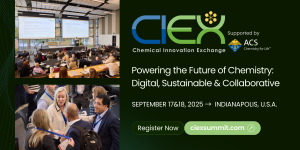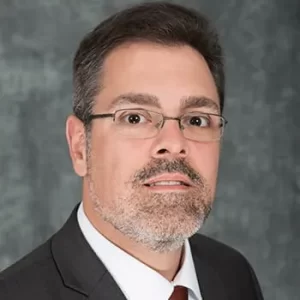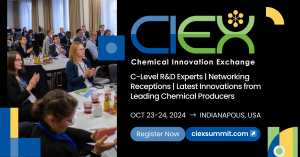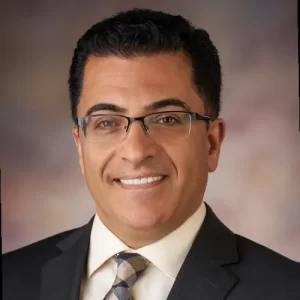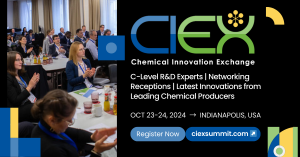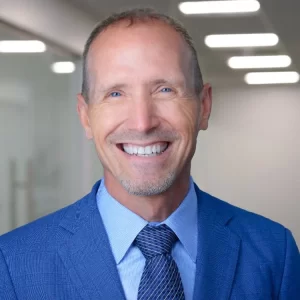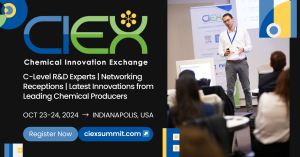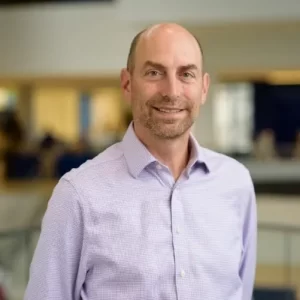Driving Sustainable Innovation in Chemicals: DuPont on Decarbonization, Customer-Centric R&D, and the Next Generation of Innovators
Editor’s Note: Marty DeGroot is Vice President of Technology at DuPont, where he leads innovation across high-performance industries including healthcare, aerospace, electronics, and automotive. Marty will speak at CIEX 2025, held on September 17–18, 2025 in Indianapolis, U.S.A., alongside senior executives from 3M, BASF, Sumitomo Chemical, Arkema, Eastman, Syensqo, and more. Below is a preview of the insights he’ll share at the summit.
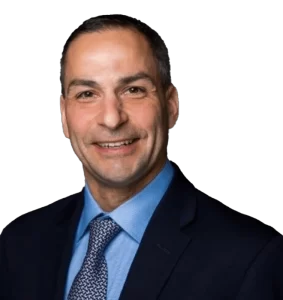
Marty DeGroot, VP Technology, DuPont
CIEX: Without giving too much away – what is the core message of your talk and what would you like delegates to remember?
Marty: At DuPont, we believe that our greatest impact on the world stems from our innovations, and that scientific advancement is essential for tackling the most pressing global challenges. Sustainable innovation is a core aspect of our philosophy as we work to provide products and applications that solve complex problems while also delivering meaningful sustainability benefits that align with customer expectations.
While there are overarching themes—such as reducing harmful substances and decarbonizing—expectations and opportunities vary by industry. Therefore, engagement with our customers is essential to ensure we meet their unique needs. Innovators face a paradigm shift as they must now consider conventional value drivers (such as cost and performance) alongside a clearer articulation and quantification of those factors that enhance customer sustainability impact as part of the overall value proposition.
A comprehensive understanding of the impacts of decisions in new product and process development—and how these decisions assist customers in reaching their goals—is a crucial role for the modern innovator. Our recent focus on carbon fluency exemplifies this mindset. We have several examples across sectors like water, healthcare, automotive, and aerospace, where innovation has led to new solutions that meet stringent performance requirements while simultaneously creating a significant positive impact aligned with customer goals.
CIEX: What motivates you to join CIEX this year?
Marty: The rapid changes brought about by disruptive technologies, supply chain volatility, and the need for sustainable solutions have made innovation essential in addressing the complex challenges we face to ensure a thriving world. The CIEX event offers a valuable opportunity to engage with senior innovation leaders about various shared obstacles and challenges. It provides a platform to foster connections, learn from one another, and explore collaborations that can speed up the development of practical solutions.
CIEX: In what ways have emerging technologies most significantly transformed your R&D process over the past few years – and what impact has this had on speed to market?
Marty: The emergence and ongoing expansion of digital innovation capabilities are rapidly transforming how innovators tackle challenges. A connected lab infrastructure has been essential for enhancing data accessibility and facilitating the use of tools like machine learning and predictive analytics. These tools increase speed and productivity, allowing innovators to dedicate more time to high-value work. One of the most significant benefits has been enabling our formulators to use these tools to minimize the number of iterations needed to quickly arrive at viable solutions for customer end-use applications.
CIEX: What are the biggest challenges – and best practices- you’ve seen in scaling innovation from lab to market while staying aligned with business objectives?
Marty: One of the biggest challenges in innovation today is the increasing need to shorten innovation cycles to keep up with rapid changes and support customer roadmaps. As a company focused primarily on innovations close to the end user, we have observed a shift in the importance of speed as a crucial factor in helping customers implement solutions and maintain competitiveness.
The greatest challenge in delivering quickly lies in early-stage innovation, where uncertainty is high. Best practices involve using lean innovation tools that facilitate rapid experimentation, allowing us to quickly reduce risk and ambiguity. In early-stage innovation, the most critical “experiments” often focus on customer desirability to ensure that innovation addresses the most significant and valuable challenges.
CIEX: Open innovation, customer responsiveness, and integrated supply chains are gaining traction. What partnerships or collaborations have been most impactful in driving sustainable growth for your business?
Marty: In today’s complex innovation landscape, building partnerships is essential for fostering speed and resilience in developing innovative solutions. Our most critical partnerships are with our customers, and some of our most recent investments focus on delivering first rapid prototypes that help to engage customers more quickly. This approach increases the likelihood of iterative cycles that ultimately lead to scalable solutions. By starting with a minimum viable product and involving customers in the development process, we enhance engagement and collaboration, which in turn helps us deliver resilient solutions.
CIEX: Looking ahead, what do you see as the most critical capability chemical companies must develop to remain competitive in the next decade?
Marty: Next-generation innovators will need to navigate multiple themes and balance the challenges of developing solutions while managing often conflicting trade-offs, such as performance, sustainability, and resilience, all with an increasing focus on speed.
To effectively address these challenges, innovators must consider how their decisions impact the entire supply chain and value chain. This means understanding and analyzing the interconnectedness of various processes and stakeholders involved. By doing so, they can drive innovation while ensuring that their operations are aligned with the broader economic and environmental considerations that influence their industry. This will require a significant focus on enabling access to modern capabilities and a strong emphasis on talent development and upskilling to utilize these capabilities and achieve impactful solutions effectively.
CIEX: Thank you so much, Marty! We look forward to hearing more from you at CIEX 2025!
Powering the Future of Chemical Industry at CIEX 2025 Summit
CIEX is the leading platform for senior-level R&D, innovation, and sustainability professionals from the consumer, industrial, and specialty chemical sectors. Now in its 11th edition, CIEX is focused on creating value by bringing together the right people, fostering synergies, and actively facilitating connections among potential partners.
Join us on September 17 & 18, 2025, in Indianapolis, U.S.A. and get exclusive access to the community powering the future of chemistry — digital, sustainable and collaborative!
🎟Register before 3rd July and save $400 with early-bird pricing!

